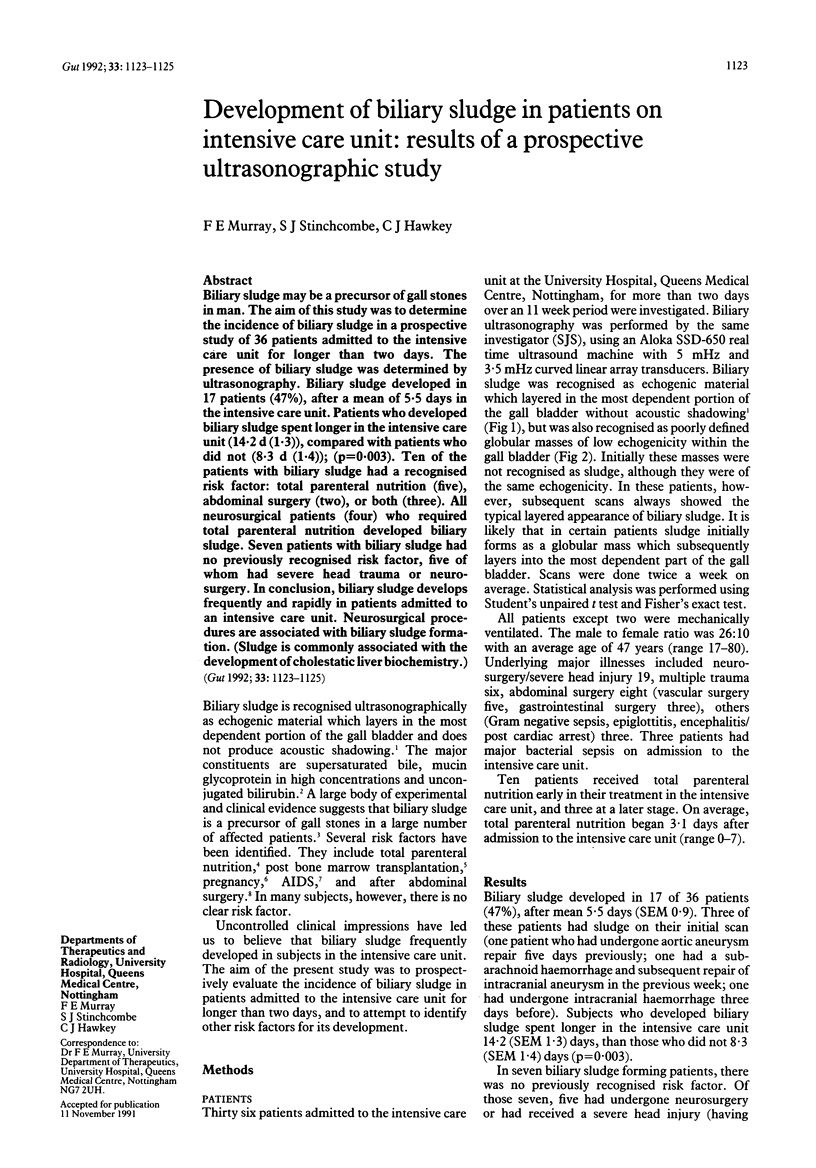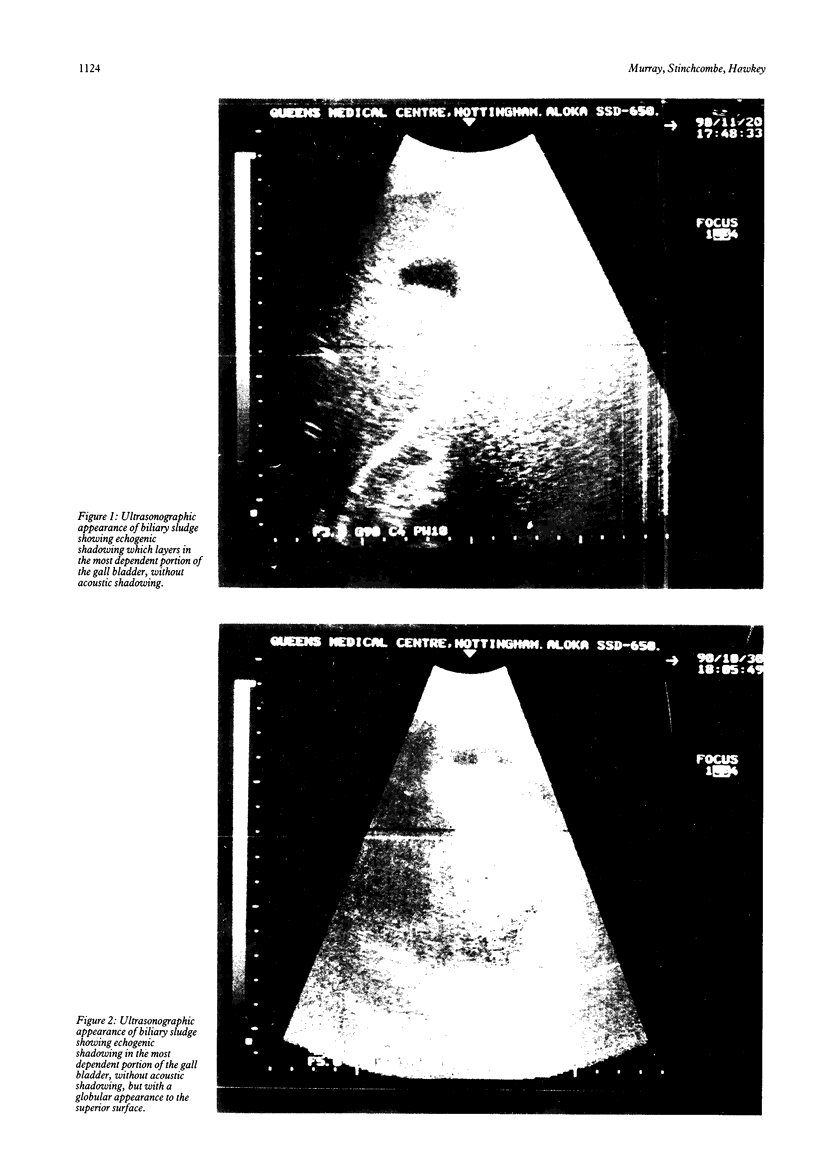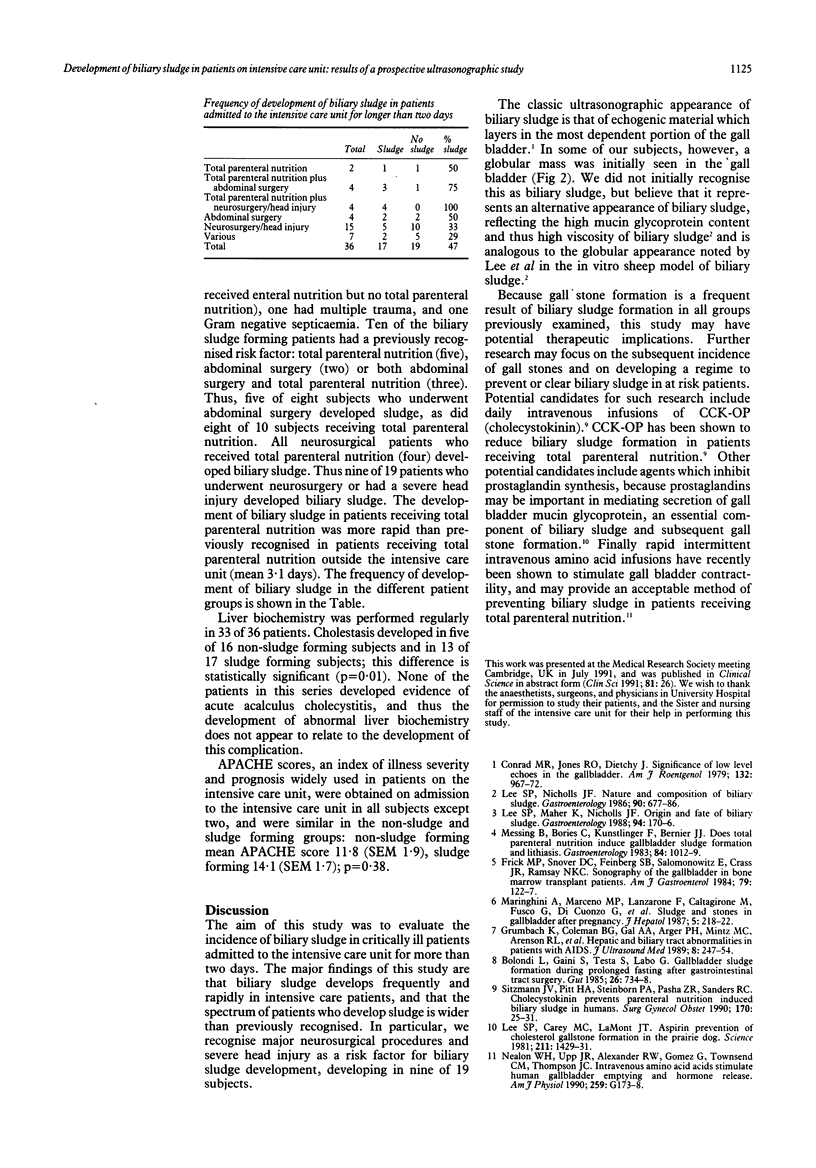Abstract
Biliary sludge may be a precursor of gall stones in man. The aim of this study was to determine the incidence of biliary sludge in a prospective study of 36 patients admitted to the intensive care unit for longer than two days. The presence of biliary sludge was determined by ultrasonography. Biliary sludge developed in 17 patients (47%), after a mean of 5.5 days in the intensive care unit. Patients who developed biliary sludge spent longer in the intensive care unit (14.2 d (1.3)), compared with patients who did not (8.3 d (1.4)); (p = 0.003). Ten of the patients with biliary sludge had a recognised risk factor: total parenteral nutrition (five), abdominal surgery (two), or both (three). All neurosurgical patients (four) who required total parenteral nutrition developed biliary sludge. Seven patients with biliary sludge had no previously recognised risk factor, five of whom had severe head trauma or neurosurgery. In conclusion, biliary sludge develops frequently and rapidly in patients admitted to an intensive care unit. Neurosurgical procedures are associated with biliary sludge formation. (Sludge is commonly associated with the development of cholestatic liver biochemistry.)
Full text
PDF


Images in this article
Selected References
These references are in PubMed. This may not be the complete list of references from this article.
- Bolondi L., Gaiani S., Testa S., Labò G. Gall bladder sludge formation during prolonged fasting after gastrointestinal tract surgery. Gut. 1985 Jul;26(7):734–738. doi: 10.1136/gut.26.7.734. [DOI] [PMC free article] [PubMed] [Google Scholar]
- Conrad M. R., Janes J. O., Dietchy J. Significance of low level echoes within the gallbladder. AJR Am J Roentgenol. 1979 Jun;132(6):967–972. doi: 10.2214/ajr.132.6.967. [DOI] [PubMed] [Google Scholar]
- Frick M. P., Snover D. C., Feinberg S. B., Salomonowitz E., Crass J. R., Ramsay N. K. Sonography of the gallbladder in bone marrow transplant patients. Am J Gastroenterol. 1984 Feb;79(2):122–127. [PubMed] [Google Scholar]
- Grumbach K., Coleman B. G., Gal A. A., Arger P. H., Mintz M. C., Arenson R. L., Aquino L. Hepatic and biliary tract abnormalities in patients with AIDS. Sonographic-pathologic correlation. J Ultrasound Med. 1989 May;8(5):247–254. doi: 10.7863/jum.1989.8.5.247. [DOI] [PubMed] [Google Scholar]
- Lee S. P., Carey M. C., LaMont J. T. Aspirin prevention of cholesterol gallstone formation in prairie dogs. Science. 1981 Mar 27;211(4489):1429–1431. doi: 10.1126/science.7466399. [DOI] [PubMed] [Google Scholar]
- Lee S. P., Maher K., Nicholls J. F. Origin and fate of biliary sludge. Gastroenterology. 1988 Jan;94(1):170–176. doi: 10.1016/0016-5085(88)90626-9. [DOI] [PubMed] [Google Scholar]
- Lee S. P., Nicholls J. F. Nature and composition of biliary sludge. Gastroenterology. 1986 Mar;90(3):677–686. doi: 10.1016/0016-5085(86)91123-6. [DOI] [PubMed] [Google Scholar]
- Maringhini A., Marcenò M. P., Lanzarone F., Caltagirone M., Fusco G., Di Cuonzo G., Cittadini E., Pagliaro L. Sludge and stones in gallbladder after pregnancy. Prevalence and risk factors. J Hepatol. 1987 Oct;5(2):218–223. doi: 10.1016/s0168-8278(87)80576-7. [DOI] [PubMed] [Google Scholar]
- Messing B., Bories C., Kunstlinger F., Bernier J. J. Does total parenteral nutrition induce gallbladder sludge formation and lithiasis? Gastroenterology. 1983 May;84(5 Pt 1):1012–1019. [PubMed] [Google Scholar]
- Nealon W. H., Upp J. R., Jr, Alexander R. W., Gomez G., Townsend C. M., Jr, Thompson J. C. Intravenous amino acids stimulate human gallbladder emptying and hormone release. Am J Physiol. 1990 Aug;259(2 Pt 1):G173–G178. doi: 10.1152/ajpgi.1990.259.2.G173. [DOI] [PubMed] [Google Scholar]
- Sitzmann J. V., Pitt H. A., Steinborn P. A., Pasha Z. R., Sanders R. C. Cholecystokinin prevents parenteral nutrition induced biliary sludge in humans. Surg Gynecol Obstet. 1990 Jan;170(1):25–31. [PubMed] [Google Scholar]




